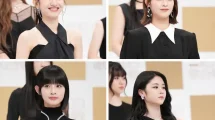This review delves into the Japan Society’s latest retrospective, “Mikio Naruse: The World Betrays Us – Part I” The series marks a significant return for the institution, which first brought Naruse’s work to New York audiences in 1973. Now, two decades later, and on the 120th anniversary of his birth, the Japan Society, in concert with Metrograph and The Japan Foundation, once again honors this golden age master with his first New York retrospective in 20 years
Released in 1953, Husband and Wife offers a compelling glimpse into the realities of life in post-war Japan, particularly the challenges of housing and economic instability. Just like in other Naruse melodramas, this social context becomes a fascinating backdrop to the personal drama of the couple, adding depth and understanding to their struggles. My initial thoughts were that Husband and Wife can be seen as a loose prequel to his 1951 film Repast, portraying a young married pair in the early days of their union. Unlike the later film, here they embark on a shared attempt to find respite, still clinging to the belief that a joint escape is viable. Ken Uehara skillfully portrays the disengaged middle-class husband who often idles by reading newspapers and treats the patient women in his life with disrespect. Just like in Repast, Uehara’s character was decidedly unpleasant, yet it was a portrayal that undeniably worked within the film’s narrative. In this particular film, Uehara’s wife is played by Yoko Sugi (Kikuko), who reportedly stepped in for the unwell Setsuko Hara. The narrative follows their difficulties in securing housing after marriage, leading them to temporarily reside with Nakahara’s widowed colleague, Takemura (Rentaro Mikuni). This arrangement creates a situation where Takemura develops feelings for Kikuko, while Nakahara spends time with office workers outside of work. As the film progresses, the couple secures a new apartment with a no-children clause, only to have Kikuko’s pregnancy revealed. Nakahara suggests considering an abortion. Financial strain, a recurring theme in Naruse’s work, is evident here as the couple worries about affording another move in six months.
Yoko Sugi’s portrayal of Kikuko performance to be understated yet powerful, conveying a sense of quiet resilience and inner conflict as she navigated the difficulties of their living situation and the unexpected pregnancy. I was especially intrigued by Rentaro Mikuni’s portrayal of the widower Takemura. His unspoken affection for Kikuko and his quiet observation of the couple’s dynamics added a layer of emotional complexity to the narrative without resorting to becoming overly melodramatic. His performance conveyed a sense of loneliness and unspoken longing.
Given Naruse’s reputation for more ambiguous or downbeat endings, I particularly enjoyed the unambiguously hopeful conclusion of Husband and Wife. This departure from his typical style felt refreshing and provided a sense of optimism for the couple’s future, even after the challenges they faced. Ultimately, Husband and Wife stands as a solid melodrama within Naruse’s filmography, effectively capturing the emotional complexities of a young marriage facing significant life challenges.
Discover Mikio Naruse’s cinematic works, including Husband and Wife, at the Japan Society this month. For more information, please visit [here].



















